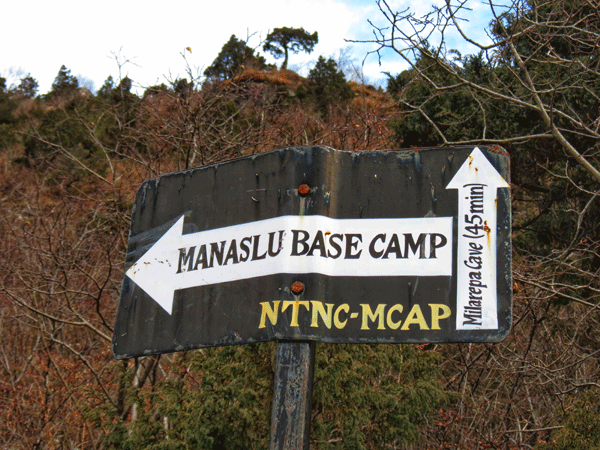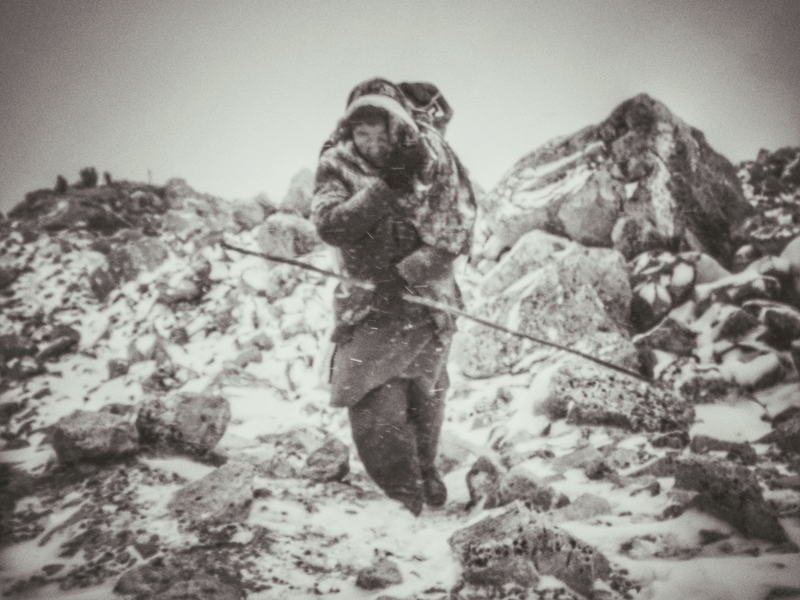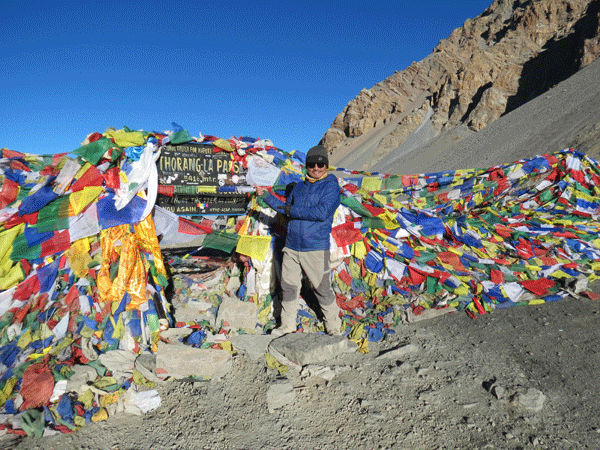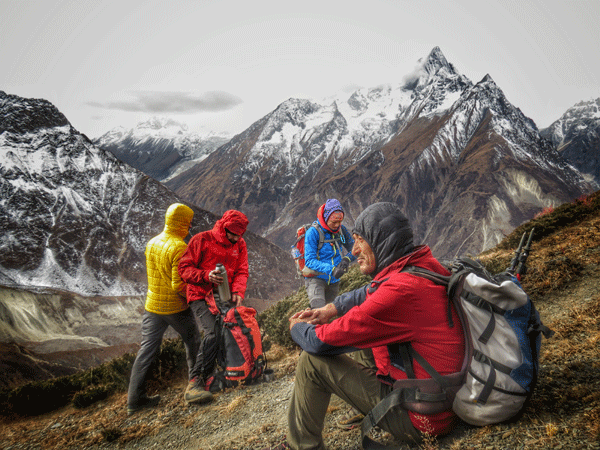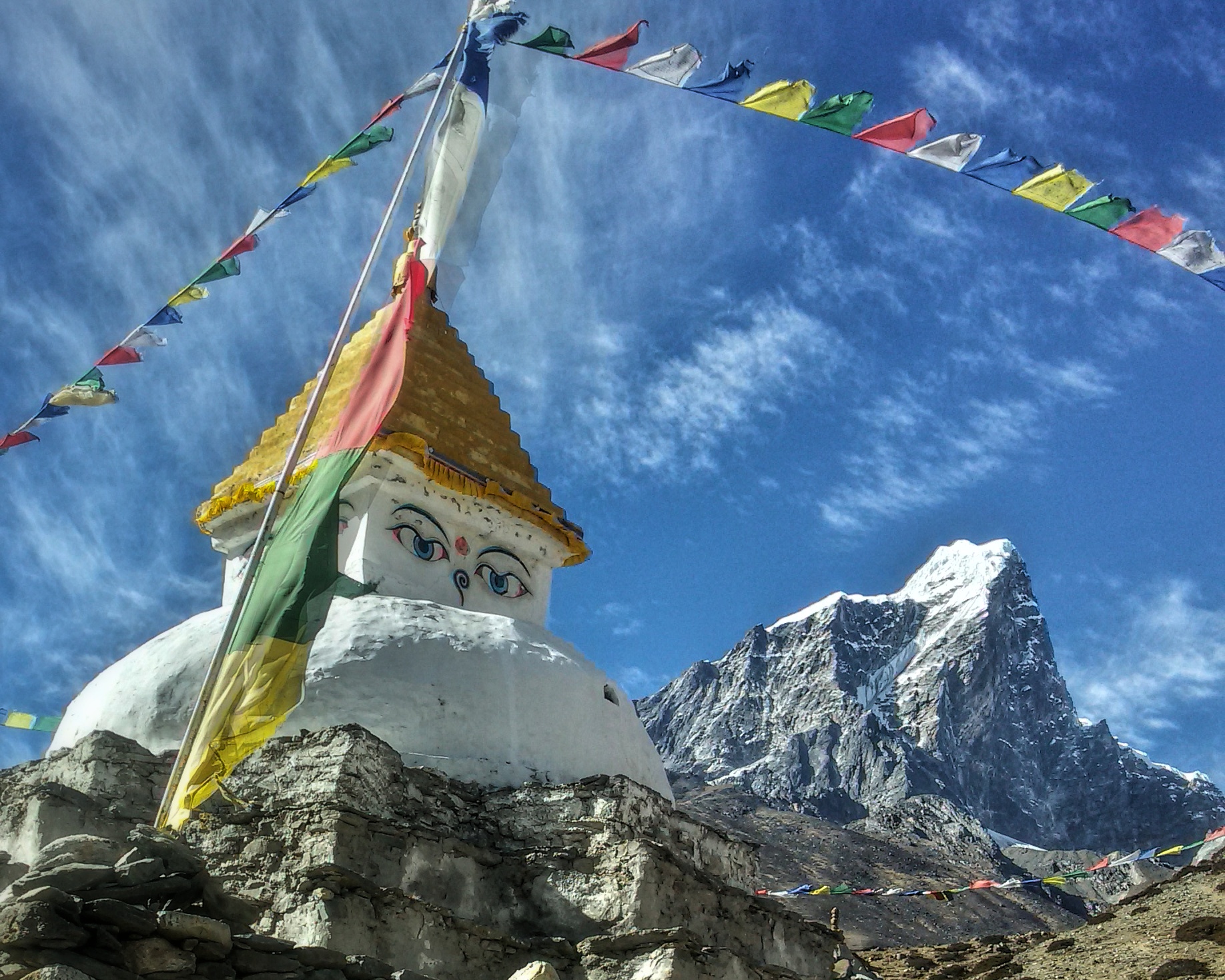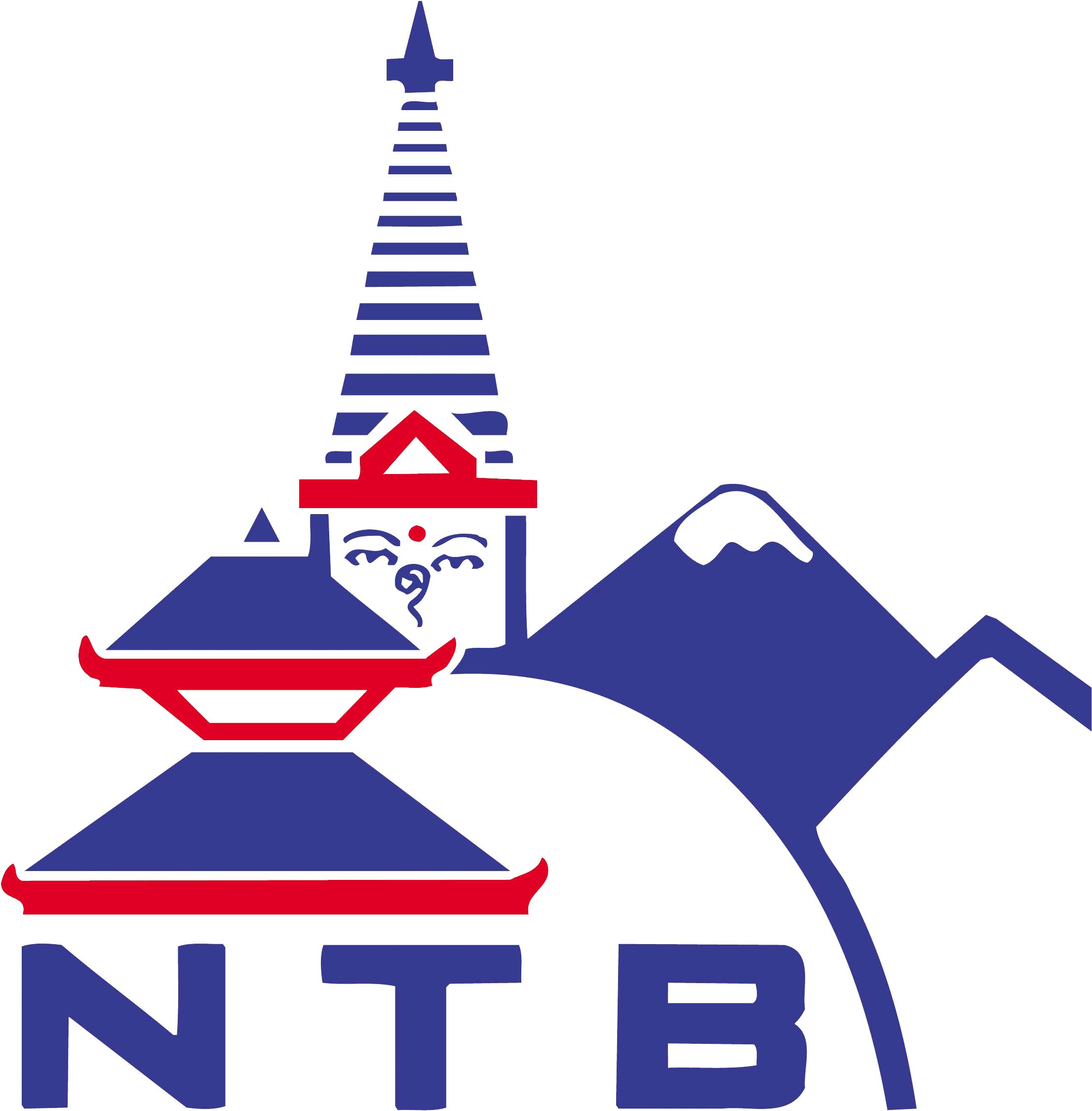NEPAL TRAVEL ADVICE
Namaste.
I greet you with our common Hindu-Buddhist “hello”. From an Old Sanskrit word, the first part of Namaste comes from “namaha” meaning “to bend” and the second part “te” means “to you”. This simple act of salutation with a Namaste translates to “I bow to the divinity/superiority in you” - it is not a sign of submission but rather showing respect to your superior entity.
Hospitality in parts of Asia begins with a Namaste, and along with the well-embodiment of the Sanskrit “shiksavalli” (teachings) of ‘Atithi Devo Bhava’, a philosophy of revering guests with same respect as God, the warm reputation of the Nepalese people was born.
In fact, the Himalaya has a rich history of a system of hospitality strengthen by conviviality and personnel trust. At altitude, growing food is difficult and limited to particular crops, and so long-distance traders were worthwhile. The risks inherent to traders in the tough environment meant hospitality is not desirable, it’s essential. Here, at the old trading routes of the Himalaya, hospitality became a very much sought after currency. Modern travelers to the Himalaya can expect to find themselves greeted with similar welcomes, however, there are few basic practices and advises one can do well with to make your Himalayan experience a one for a life-time.
GOVERNMENT TRAVEL ADVICE
Now, evermore, during this period of coronavirus, Government travel advisories have allowed people to travel with flexibility and security. It is essential that you get advice about travel warnings, safety and security, local laws and local contacts of your embassy and diplomatic mission, before travelling abroad. Most Governments advice travelling in Nepal with a certain degree of cautions due to its underdeveloped infrastructures and security situations.
PASSPORTS AND VISAS
You must hold a passport which is valid for at least six months following the return date of your trip. We recommend that you keep a photocopy of your passport separately from the original, or even store a photo in your electronic device, just in case the original is lost while you are travelling. It is important to note that Nepal does not recognise dual-nationality. Always travel and document your stay with one passport only.
It is your responsibility to ensure you have the correct documentation and visa stamp(s) for your trip. Tour operators may guide you along the process but they do not guarantee nor be liable if your visa or travel permits are denied. Make sure that you have entered the correct number of days of stay in your visa application and that it covers the entire portion of your trip. Currently, you have 15, 30 and 90 days visas with concurring application fees.
You can receive an “On Arrival” visa at the arrival hall of Nepal’s international airports, should you wish to not apply prior, where you will find a number of electronic kiosks machines that lets you take a photo, fill out an application form and print it. Take your completed form to the payment counter where you'll pay for your visa, and then head to the immigration line for "Visa on Arrival". It is suggested that you bring a passport-sized photo and carry the right amount of money with you for your visas, as the kiosks and payment machines may not always be operative.
You can also apply for your visa at your local Nepalese Embassy or Nepalese Diplomatic Mission in your respective countries. Certain nationalities must apply in advance for a visa, so please check with the respective authorities of your country. The visa will remain valid for only six months from the date of issuance, so make sure that you do not send in your application too early.
If you are planning to apply for your tourist visa online, the application must be submitted within the 15 days prior to your date of arrival in Nepal. The online application will become invalid after 15 days, by which a new application must be submitted. Once you’ve submitted the form, print out the confirmation receipt and show this to the Immigration officer upon arrival along with your passport and the proper amount to pay for your visa. Online Applications can be made at http://online.nepalimmigration.gov.np/tourist-visa
TRAVEL INSURANCE
The very nature of adventure travel carries its own inherent risks and difficulties, and as the Himalaya sits on the pinnacle of one of the remotest wildernesses of the planet, we strongly recommend that you and all members of your party take out a travel insurance that adequately covers and provide financial protection against unforeseen circumstances, before arriving in Nepal. Your cover should include medical expenses, as well as airlifts and repatriation, in the event of accident or illness. Cover for loss and theft of personal belongings during inland travel as well as on flight transits, personal liability, delays at your outward and homeward point of departure, and overseas legal expenses.
Most typical policies exclude so-called dangerous sports such as rafting, altitude trekking, climbing, mountain biking, paragliding, and etc, so it is essential you discuss the coverage with your insurance provider for all your activities in Nepal. Your medical coverage should also include a 24-hours medical emergency number which you need to carry with you at all time during your travel.
If you need to make a claim, you should keep receipts for medical treatments and medicine expenses, and in the event, you have anything stolen, you must obtain an official statement from the police.
HEALTH
Visit your doctor or travel clinic well in advance of travel, preferably at least eight to six weeks ahead, to have your basic health check-up. Ask if your travel plan may affect your health and plan any vaccinations you need. Some vaccinations require more than one visit, and some may be incompatible with certain medicines or medical conditions. It is important that your own medical history is taken into account.
Not all medication prescribed in your country is available in Nepal, so carry enough medicine for your trip. It is advised that you also carry a copy of your prescription and a letter from your doctor stating: what the medicine is, how much you’ll take, and that it's for personal use.
MOSQUITOES
In Nepal, there’s a school of thought that argues the history of the country has been shaped as much by the mosquito as by any great king. Early European explorer, as well as officers of the British Empire have had to turn back from the foothills of the Himalaya citing the mosquitoes posed too great a consequence to proceed on. Merchants and pilgrims travelling the trade route linking India and Tibet would could cross the high mountains during the hot season, avoiding the fatal hazards brought by winter storms and low temperature, but then had to wait until the cold season to travel across the malaria-infested jungles.
Mosquitoes are not such an issue during autumn, winter and spring seasons, however, between pre-monsoon May and October, especially with heavy rainfall and heat range arouse, the environment is heavenly for mozzies to pest. Mosquitoes can be found up to the heights of 2,000m (6,500ft), and in some rare cases they have been seen annoyingly around 2,800m (9,000ft) as well. Holidaymakers love to travel the countryside and remote venues in Nepal; therefore, you need to look at the potential hazard and be aware of the risks.
Malaria, Japanese encephalitis, elephantiasis, dengue, etc are some of the common diseases spread by mosquitoes in the Himalayan nation. It is essential that you seek medical advice prior to travel, and especially if you are pregnant or have an underlying medical condition. There are several simple measures you can take to reduce your risk of infections spread by mosquitoes: use insect-repellent on exposed skin, better avoid spending your time outside during the evenings and night time when mosquitoes are mostly active, wear suitable clothing and cover your skin as much as possible, stay away from areas with stagnate water, garbage sites and bushes, and use a mosquito bed net if sleeping in unscreened accommodations. Ask for a mosquito repellent burning mat or an electric repellent, which most hotels and lodges will gladly provide for your room. Whist your travel, it is important you seek prompt medical attention if you have a fever or display any other symptoms.
HIGH ALTITUDE
Your long-awaited trip to the mountains of Nepal arrives with beautiful natural locations and hiking trails, only to suddenly feel overcome by headaches and fatigue. Generally, almost all vacationers experience mild symptoms of high altitude whilst on a holiday in the Himalaya. And, yes even your experienced guide. The mild symptoms can last from minutes to hours and even days, and most people are able to tolerate and still function and do their activities.
At higher elevations, the barometric pressure in the air drops. Less air means there’s also lesser ratio of oxygen for our body to intake. So, the body compensates by breathing more rapidly, the heart pumps at a higher rate to meet the demands of oxygenated bloods. This causes stress to our body, and if it is unable to adapt, a prolong exposure to the stress can cause swelling in different organs with fatal outcomes.
Thankfully you have come prepared and read all the medical advises regarding Altitude Sickness. It is ‘essential’ that you have good understandings of the causes, symptoms and risks of Altitude Sickness, and how to prevent or at least provide you with a plan when the symptoms worsen. The most simple and effective way to avoid AMS (Acute Mountain Sickness) is by ascending slowly to higher altitudes, gradually over several days to allow the body to acclimatise and adjust to the decreasing level of oxygen. It would also help if you gradually increase your physical exertion level at altitudes for the first few days. Lastly, you should stay well-hydrated (at least three litres of water every day while on trek) and avoid consuming alcohol for the first few days at altitude. If at any time you may be experiencing headache and one of the symptoms of AMS, it is not necessary to worry about. Please report your experiences to your guide, and to your travel companion, for assessment, stay relaxed, drink lots of fluid (of course, not alcohol) and rest. As your body gets used to the altitude, the symptoms should go away.
If you suffer from circulation, heart or respiratory problems, discuss your concerns with your primary care physician or your doctor before confirming your travel.
INTERNAL FLIGHTS
The internal airlines in Nepal run shuttle flights many times daily between each STOL (Short Take-off and Landing) itinerary with number of planned schedules according to the booked volumes. When you book a flight, you are then allocated a schedule that correspond to the airline’s passenger departure list for the day, in simple term, a first come first served basis. The early passengers are provided seats on the ‘First Flight’ of the day, and further down the list of bookings you are the later your flight schedule will be.
It is important that you understand, you book for a particular DAY, and NOT for a day and a time. As soon as the conditions are safe for take-off and landing, the First flight of the day takes off followed shortly by the Second flight. The First flight returns back now to carry the passengers of the Third flight, and subsequently the Second flight returns to board the passengers of the Fourth flight. And so on the shuttle schedules continue through the day. If there is bad weather, the airports will be closed off and all subsequent flights therein will be delayed. This might be for an hour, or till late in the afternoon, or for all day and even weeks, nobody will know for sure when or if any flights are going. The clouds over the Himalya certainly do know how to cast confusions and frustrations, but this is for your own safety and for the safety of your fellow passengers and flight crews. Once the conditions are reported safe for take-off and landings again, the flight schedules continue on shuttling passengers as per the list of bookings.
Inevitably this process is time consuming and frustrating as you need to be at the airport early and then may have to wait all day before being told your flight is not leaving for the day. Please accept that delays in your Himalayan flights are, like the mighty-Titan Thanos, inevitable, and is beyond any one’s control and is the same for all tour operators and travellers. Therefore, it is recommended that you have contingency days in your itinerary in case your flights are delayed, that you book a flexible international flight so the ticket can be changed without incurring additional expenses, and be prepared to pay for the cost of an internal helicopter flights. Again, the additional costs should be covered by and recovered from your insurer.
ACCOMODATIONS
Great accommodations are your temporary homes when you travel abroad, and can either enhance or complicate an otherwise great experience. Discovering your accommodations in Nepal is an adventure on itself with super varied offers from former palaces to luxury safari campsites to comfort mountain lodges and barest backpacker stays with local families. Thankfully, with accommodation options literally everywhere, you won’t have to worry about going without a bed or a decent warm meal in Nepal. However, there is hardly any regulating body for accommodations, and to put that together with the remoteness of tourist locales, travellers without logistical supports, often hope for the best when they turn up on the day.
Established tourist cities – Kathmandu, Pokhara, Chitwan and few others, offer everything from elegant 5-star graced by elites and celebrities to questionable stays. Most hotels and resorts may not often hold the same standards of those found in South-East Asia or Europe, yet they are respectable enough to spend a relaxing vacation at the end of a day. You will find the prices are far cheaper than many similar properties around the world, allowing you the opportunity to splurge and enjoy the advantages, if you do your research.
Up the mountains, the popular trekking routes are lined with comfy lodges and basic teahouses, and further high you go, simpler teahouses offer a level of shelter from mountain elements, a much-welcomed comfort when taking in account the complex landscape and remoteness of the region. In the Annapurna and Everest region, you have an option to stay at Comfort lodges with ensuite facilities and wider range of cuisine than commonly available in the mountains. General teahouses are very basic with tiny rooms furnished by twin-sized beds with a pillow, a sturdy mattress and a blanket. Bathrooms and toilets are shared and, in some cases, isolated from the main building. Showers are cold and will cost you extra for hot water. Electricity, often powered by solar technology, is limited to common areas like dinning and lobby. The mountain teahouses rarely provide single accommodations and will request you to bunk with a fellow traveller. While these may paint dire portraits of Nepalese teahouses, these family-run mountain stays will soon be your favourite accommodations, where you quickly learn to appreciate the simpler things, like huddling around the communal fire, whilst chatting up and sharing your experiences with your fellow guests, the warm drink in hand, the food that now starts to taste the same yet surprisingly delicious in the mountains, and the freedom of staying unplugged from the rest of the planet.
STAY SAFE FROM THEFT, LOSS AND SCAMS
Nepal is a fairly safe destination to travel to when it comes to thefts and crimes. Even so, there are have been reports of minor instances, and one should always remain vigilante and be responsible of their belongings and documents. While arriving in, carry only the essential equipment, clothing and devices. It is normal to walk around the country in your hiking boots or even flip-flops (an acceptable culture since the early days when hippies roam the country), or enter establishments and restaurants wearing your trekking gears and comfy wears.
If your baggage is lost during flight transit, report it to the airline and keep a copy of the report with you, so that you can submit for a coverage in case of loss. Many hotels in the cities offer Safe-Locker facilities to keep your belongings, documents or valuables while you return from your travel from remote areas. Always keep your credit card with you and have the sellers or service providers swipe the card-machine in your presence.
In the trekking regions, stay vigilant on the whereabouts of your belongings and do not display your valuables. Carry just enough cash and have it hidden and with you at all time. At the mountain lodges and teahouses, keep your belongings away from windows and doors from where prying hands can reach and grab them off. Keep in mind that the doors and windows may not always be secured and can be opened with enough force. Higher up the mountains, electricity is only available at certain common areas such as dinning and communal areas, so do not leave your electronic devices unattended while having them charged. Every morning before leaving a teahouse, re-check your belongings and the room.
Of course, where there are tourists there’s always someone offering better, cheaper and even financial partnership deals. Just stay vigilant, be mindful of your surroundings and enjoy your much-awaited holiday.
If you have any concerns, discuss the issue first with your guide and let them speak with the locals on your behalf. There are number of police check posts throughout the country and a special unit of Tourist Police have been assisting tourist since 1979. Report any theft, loss and crime at the police check points and keep a copy of the report with you for future referrals.
OUT ON THE TRAIL
Again, while travelling to the remote regions carry only your essential gears, equipment and devices. Make sure that you are comfortable with the weight, size and balance of your daypack. Distribute the weight of your backpack evenly so that it may not hinder your balance out on the uneven sections. The mountain trails are often big enough for a single traveller, so while giving ways make sure your backpack and walking poles do not hamper yourself, your fellow travellers or the super-strong porters passing along. Similarly, while giving ways to yaks, cattle and horses, stay on the hillside of the trail, no matter the size of the road, for the animals may get startled and push you off the steeper end of the mountain. Lower your walking poles, especially your GoPro and Selfie sticks, in the presence of cattle who may interpret your raised cane as an act of aggression. Be mindful of your surroundings while walking in the mountain, taking a photograph and resting, the mountain terrains are often loose and the rocks, slippery footings, bushes, branches, and the hidden icicles can often trip you over. While resting your backpack and your belongings on the side of the trail make sure they are on level ground and that they do not roll down the hill. Often the mountain trails follow the deep valley over raging mountain rivers, so whatever rolls off the trail will eventually fall thousands of feet down into the river.
CULTURAL DIFFERENCES
Many tourist destinations in Nepal are in regions where infrastructure, lifestyles and culture are very different from your own. There are many ethnic communities who makeup Nepal, originating from the historical migratory and trade patterns from the neighbouring lands of Tibeto-Burmans in the North and Indo-Aryans from the South. Furthermore, the geographical isolation created by the mountains and varying climatic differences have scattered and created pockets of secluded communities with distinct lives, languages and cultures from each other. With limited social services and public infrastructures, most villages remain sheltered from outside influences and have retained their traditional beliefs and practices. This is often the very reason to visit Nepal but certain aspects and cultural acceptances may be frustrating or even stressful.
The general society is conservative with traditional beliefs, with even shamanistic and animalistic practices surviving in some of the undisturbed regions. It is advised to dress conservatively in public and avoid public-display of affections which may be considered as inappropriate. Even though same-sex relationships are legal in Nepal the general society is yet to accept them and is frowned upon. The Kathmandu-based gay rights group, the Blue Diamond Society, will always be able to share information on the progressive line of acceptance in Nepal.
OTHER USEFUL TIPS
Nepal uses Nepali Rupees (rupiya) as the unit of currency. Most upmarket tourist business quote prices in US Dollars and accept payments in Euros, Pound Sterling and Indian Rupees, converted as per the day’s exchange rate published by Nepal Rastra Bank (the central bank of Nepal). Make sure your bills are relatively new as most businesses will not accept a crinkled currency, and carry a range of smaller bills as well.
Many tourist houses and establishments accept credit cards along with a percentage of a processing charge. Most towns and few popular trek routes have ATM counters that accept approved debit and credit cards. Most are open 24 hours and have instructions in English on the withdrawal process. Before travelling, inform your bank that you intend to use your cards in Nepal so that the transactions are not held on account of being considered as cloned or stolen.
Nepal operates on 230V standard voltage
and frequency of 50Hz, with most lodges using sockets for Type C, Type M or
Type D plugs. Make sure you have the correct supply voltages and electronic
plugs that are compatible for your devices.
